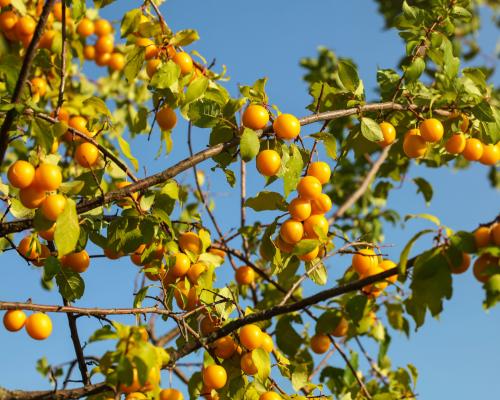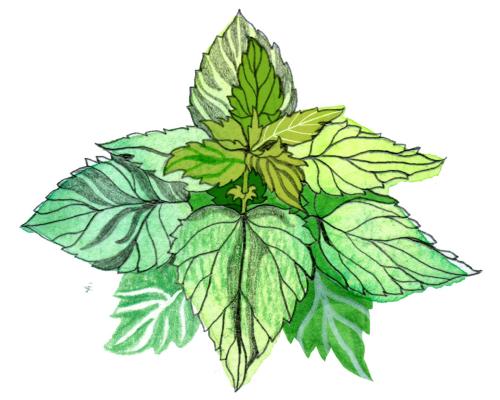
Many fruit trees are pruned in winter when they are dormant, in anticipation of the burst of energy that comes with spring. Yet established stone-fruit trees – plums, cherries, apricots and others in the Prunus family – should be pruned now to prevent them contracting silver leaf disease. Transmitted by spores active in the autumn and winter, and which infect trees through open wounds, this fungal disease can cause leaves to turn silver and lead to whole branches dying back.
Pruning in summer is also prudent given that bacterial canker can find its way into a susceptible tree during the colder months of the year. Any wounds caused by pruning now will have plenty of time to heal before the seasons change.
The aim when pruning a plum tree is to manage its size, shape and health, so start your cuts following the three Ds principle. Any branches that are dead, damaged or diseased should be the first to go. Once those are cleared, look for any that cross one another, and carefully prune those as crossing branches can rub, causing abrasions that can let disease in.
The next goal of pruning plum trees is to take the growth back by approximately a third, while creating or maintaining an open, goblet shape, which is ideal for air flow and vigour. You can do this by shortening branches, removing vertical ones (“watershoots”) and addressing congestion, especially at the centre of the tree. You can also remove any suckers that have appeared at the base.
Make confident cuts using clean, sterilised equipment, whether that’s secateurs for small chops or loppers and pruning saws for more substantial cuts. Determine where to cut by finding an outward-facing bud that’s pointing in the direction that you want new growth to appear from, then make a sloped cut above it.
While you’re doing this, step back regularly to look at the tree as a whole. It’s very easy to get fixated on sorting one section before realising that it’s all become lopsided. Cuts made now will determine the future shape of the tree, so it’s worth doing this job when you have time to be discerning.
The point of judicious pruning isn’t merely to have more fruit – although that is a huge bonus – but also to ensure the health and vitality of trees so that they have long, fruitful lives. And if you inherit an old, neglected plum tree, you can use this approach to rehabilitate it. If it is done patiently and steadily over a few years (as aggressive pruning can be detrimental), it is possible to restore an abandoned tree to its former fruit-bearing glory.





